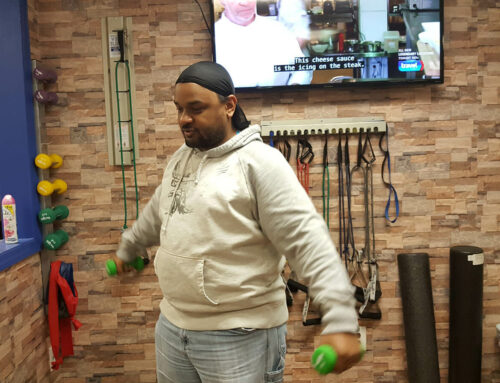
Pain Management
Non-medical pain management techniques are a part of the physical therapy services you may receive for a pinched nerve. The therapist might recommend a contoured pillow so that you can avoid putting undue pressure on your neck while you sleep. During your physical therapy, you might be outfitted with a brace to wear on a temporary basis. The brace could help you to restrict your movements and prevent a worsening of an injury. Braces are followed by strengthening and range-of-motion spine exercises.
Guidance on Proper Posture and Ergonomics
During physical therapy sessions, the therapist will watch you as you bend, lift, twist and turn. The therapist will also observe you as you sit, stand and do other common movements. These observations allow the physical therapist to provide you with guidance on proper posture. A slipped or herniated disc that is causing a pinched nerve could be a result of poor posture, and correcting your posture could prevent a recurrence. The therapist can also guide you on the proper ergonomics of work-oriented tasks, such as typing, texting and lifting heavy objects. The therapist will show you how to do these things and give you tips on avoiding poor posture that contributes to pinched nerves.
Strengthening and Stretching Exercises
Cervical and lumbar mobility are important aspects of relieving the symptoms of a pinched nerve. When it comes to the question of, “How can physical therapy help a pinched nerve?” one of the top answers is through these range-of-motion exercises. These stretches are designed to take the pressure off of the nerve root. Whether your pinched nerve is in your neck or in your lower back, the stretches help to restore the range of motion of these parts of your spine. The therapist will also show you how to do strengthening exercises. These exercises are designed to increase the stability of your spine. Once your pain level has decreased, your therapist will introduce you to these exercises. You will need to practice them at home in order to receive the best possible level of relief from the pinched nerve symptoms.
Manual Therapies
Physical therapists also offer manual therapies to help with the symptoms of a pinched nerve. One type of manual therapy provided by the physical therapist is manual cervical traction, which is often used for a pinched nerve in the neck that is causing numbness and tingling in your arm. Soft tissue massage relaxes tight muscles that could be putting pressure on a nerve. The therapist might also recommend additional therapies, such as the application of heat or ice or alternating heat or ice to ease your symptoms.







